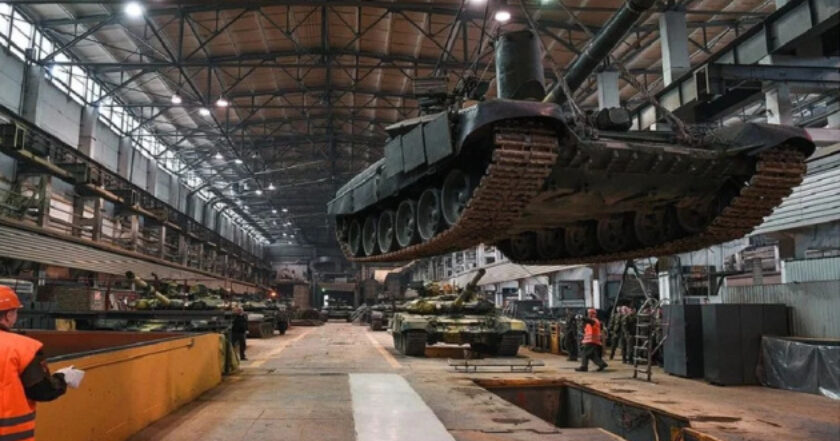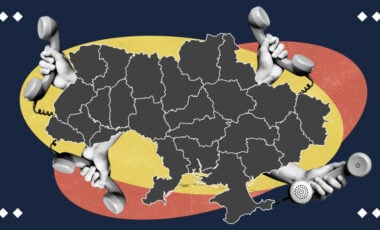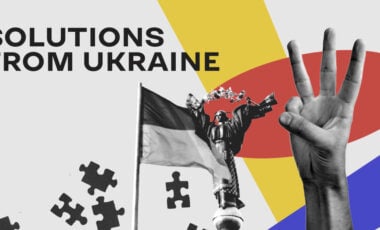Russian arms production surges, but Kremlin's propaganda painting a rosier picture than reality – Welt

Photo: Ukraine's intelligence
It is widely believed that the Russian army has almost unlimited resources, but a closer examination of the statistics shows a different reality.
Welt, a German publication, reports this.
As mentioned in the article discussing four crucial factors of armament, the situation is not as positive as the Kremlin claims. However, it also falls short of the expectations of Ukrainians and their Western allies.
According to the publication, Russia has lost almost 2,900 tanks, 5,500 armored personnel carriers, and similar equipment since the beginning of the full-scale invasion of Ukraine.
This implies that approximately 90% of the combat tanks present in Russia as of February 2022 have been demolished.
But in 2023, it was reported that the Russian Defense Ministry had supposedly provided 1,600 tanks to the armed forces. However, it later turned out that this referred to refurbishing vehicles already in storage rather than their production. The actual number of newly manufactured tanks is estimated to be around 200 per year.
Before the major invasion, the specialized publication "Military Balance" had estimated that there were approximately 10,000 modern T-72/T-80 tanks in warehouses, regardless of their condition.
Looking at satellite images of these "bare-sky deposits," it's evident that they have significantly decreased between 2021 and 2023, with some estimates indicating a decline of up to 40 percent.
Currently, Russia is utilizing tanks that are somewhat "museum pieces," such as the T-62 and T-55, in outdated versions. Researchers have determined that tanks that are easily fixable are diminishing, and the longer Russia continues to use leftover Soviet tanks, the more deteriorated the tanks still in storage will become. Despite this, these supplies may last for at least another two to three years of war, assuming the rate of losses remains the same.
The situation is different for missiles. Two years ago, it seemed that they were running out in Russia. Production capacity was several dozen per month. The import of thousands of Iranian kamikaze drones from the fall of 2022 and later their domestic production should temporarily alleviate this problem.
Despite the sanctions, Russia can steadily increase the production of missiles and cruise missiles, some of which require 40 to 50 Western components, which the Russian Federation receives thanks to "gray" imports. Today, according to Western experts and the Ukrainian military, Russia produces up to 130 missiles and cruise missiles with a range of at least 350 kilometers, as well as about 100 shorter-range missiles, every month.
Further production increases are probably impossible, at least in the short term.
In instances of significant attacks, powerful missiles like the Kinzhal and Iskander, or cruise missiles such as the Kh–101 or Kalibr, are typically held off for weeks until enough force is gathered.
Regarding drones, the Washington Post reported last year that Russia wants to produce 6,000 Shahed drones domestically by the summer of 2025.
By 2030, production should increase to 32,000 drones per year, Russian Deputy Prime Minister Andrey Belousov said recently. More than 11 thousand such devices are expected to be produced this year.
According to the publication, there is enough reason to doubt Russian reports of success. But at the same time, according to Ukraine's intelligence, Russia increased domestic production from a few dozen to more than 200 per month.
The material also provides an analysis of ammunition. Russia's consumption of artillery ammunition is huge. It is about 10 thousand per day or 300 thousand per month. Accordingly, the need is almost 3.6 million artillery shells per year.
The estimates for Russia's current production capacity vary greatly. According to Ukraine's intelligence, Russia produced approximately 2 million projectiles of 152-millimeter and 122-millimeter last year, while the Estonian Ministry of Defense reported 3.5 million.
According to Russia's Ministry of Defense, approximately 2.1 million projectiles are scheduled for production this year. However, Moscow estimates a need for around 5.6 million and plans to make up the difference by tapping into the Soviet "surplus." The condition of these stored munitions is expected to be relatively low.
Belarus and North Korea can provide supplies to help cover Russia's shortfall. Likely, Pyongyang has already sent over 3 million artillery shells to Russia.
If government officials from Moscow are to be believed, Russia's military-industrial complex is flourishing like never before, and the volume of government contracts is at a record level, the authors summarize.
For reference:
It should be noted that US President Joe Biden, in a telephone conversation with Xi Jinping, warned China against attempts to support Russia's military-industrial complex.
It was also reported that the participants of the EU-US summit held in Washington called on China to use its influence on the Russian Federation to stop its aggression against Ukraine.


















































